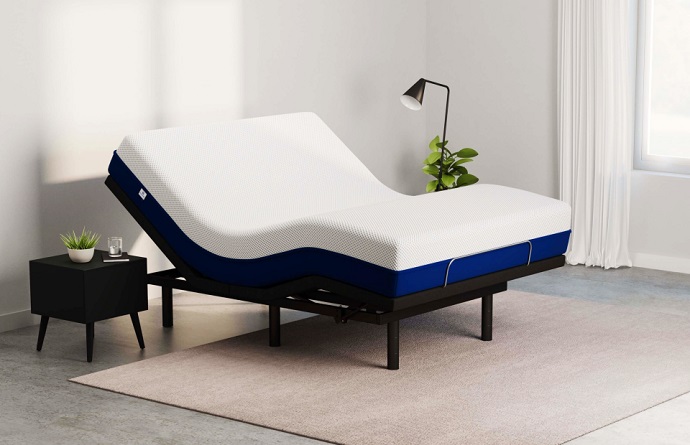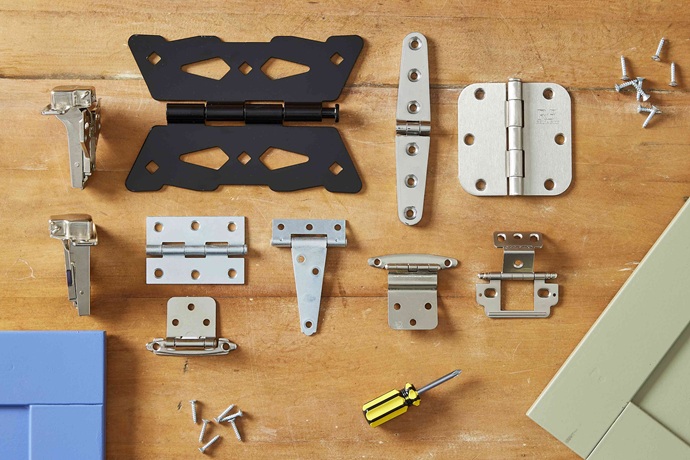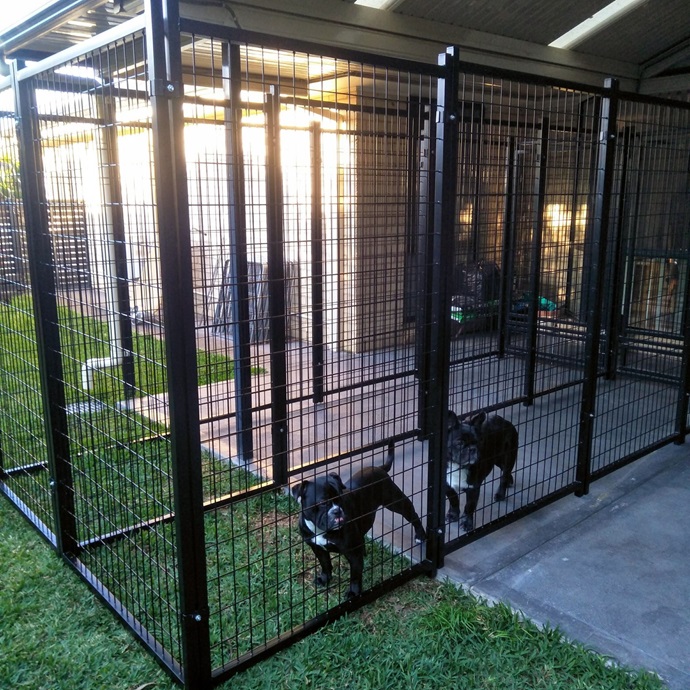Do you have a senior dog, a dog with mobility issues, or a pooch with short legs that has a hard time getting in the car or onto the sofa? Constantly lifting them up and carrying these pets could be a struggle and quite difficult with heavier dogs. Fortunately, there’s a solution for pet owners seeking convenient and safe ways to assist their furry companions – pet ramps.
These innovative tools provide a gradual incline or decline that allows pets to navigate elevated surfaces, such as beds, couches, cars, and even stairs without putting excessive strain on their joints or risking injury. If you want to make your and your pet’s life easier, read on to find out how your dog can benefit from one, and what type of ramp would best suit your needs.
Why Does Your Dog Need a Ramp?
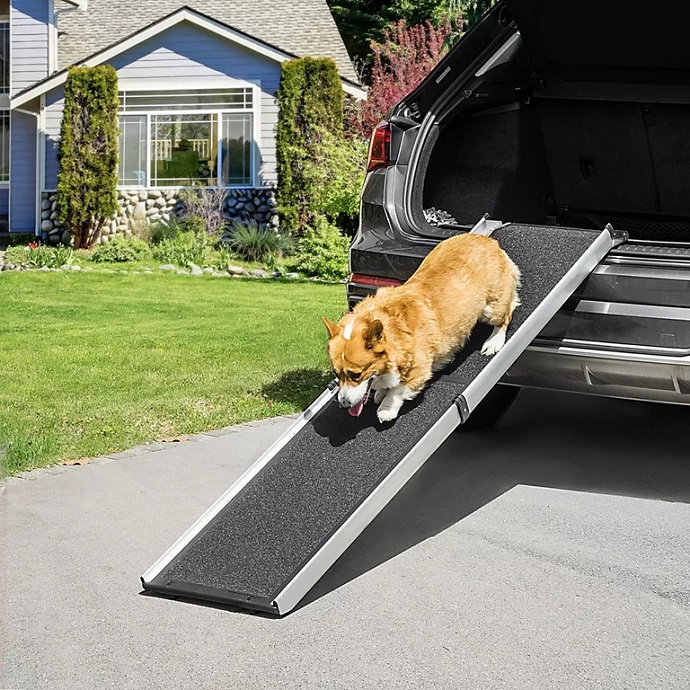
Unlike humans, dogs are not built to sustain prolonged climbing or jumping on steep surfaces. Studies have shown that this can place a lot of pressure on their joints, leading to arthritis and agility issues. Climbing up and down ‘people’ stairs can prove to be very demanding on senior dogs and breeds with shorter legs like Dachshunds or Corgies. Puppies will have a hard time getting on the sofa, and even medium-sized dogs could have issues getting in SUVs.
Picking them up and carrying them not only stresses your back and joints but it is sometimes impossible. These are all reasons why both you and your pup need a ramp or stairs. A dog ramp provides a gentle slope that minimizes impact, reducing the risk of joint-related issues. It offers a stable and controlled way for pets to access different areas, decreasing the chances of accidents or falls. A pet ramp eliminates the need for lifting and allows pets to be more independent.
Types of Ramps and Stairs
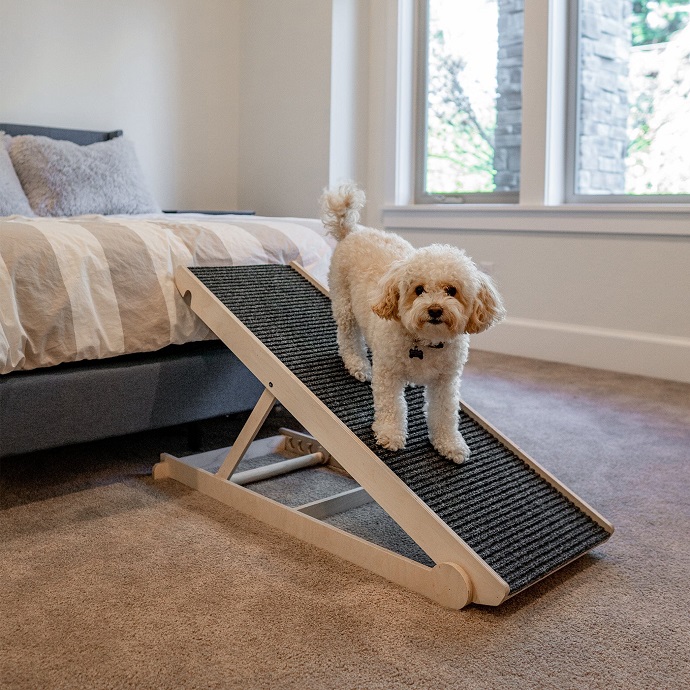
- Indoor Ramps: These ramps are designed for household use, primarily helping pets access beds, sofas, or other furniture. They often have a carpeted or non-slip surface to ensure stability.
- Outdoor Ramps: A heavy-duty pet ramp is suitable for assisting pets in navigating steps or getting in and out of vehicles. They are built to withstand different weather conditions and typically have a durable, anti-skid surface to allow proper traction and speed control.
- Folding and Telescopic Ramps: These ramps are portable and can be easily folded for storage or travel. They are ideal if you are a pet owner who frequently takes pets on trips or outings.
- Adjustable Ramps: Quality adjustable pet ramps allow you to customize the incline or height to suit your pet’s needs. This feature is especially useful for accommodating different furniture heights.
- Stairs: Stairs are also portable and convenient for dogs who are used to maneuvering the household stairs. They come in different sizes and heights, with 3, 4, or 5-step configurations and can be made from a variety of materials, including foam, plastic, metal, and wood.
What to Consider When Choosing a Ramp?
- Size and Weight Capacity: Depending on the breed and weight of your dog, choose a ramp that can comfortably support their size and weight. Consider potential weight gain if you have a puppy or senior dog.
- Surface Grip: Opt for a ramp with a non-slip surface to prevent accidents. Look for materials like rubber or carpeting for better traction.
- Sturdiness and Stability: Ensure that the ramp is made from sturdy material and is stable so it won’t collapse while your pet is using it.
- Storage and Portability: If you have limited space or travel frequently a foldable or telescopic portable dog ramp might be more suitable.
- Ease of Cleaning: Select a ramp that is easy to clean as pets might track dirt or shed fur onto it.
Is a Ramp or Stairs Better for Dogs?
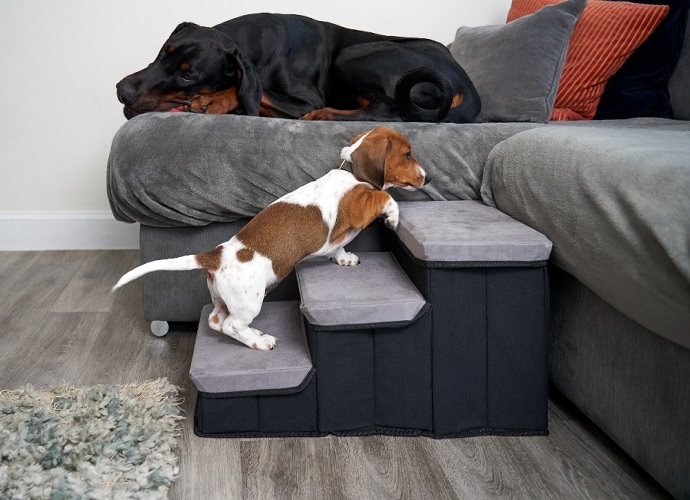
When choosing between a ramp or stairs, you need to think about functionality and your dog’s abilities. If your pup is used to handling the stairs and is physically fit, then it will probably have no issues managing the stairs. Though, keep in mind the height of the stairs is static and you can’t adjust it if circumstances change. Make sure you have the right measurements of height you need so you don’t get stairs that are too short for the bed, as well as the weight limit of the product especially if you have a heavier dog. The upside of stairs is that allow for more height in a short distance, which means that don’t take up a lot of floor space.
If, on the other hand, your pooch is having difficulties climbing stairs or is recovering from an injury, then the ramp can offer a more gentle incline elevating the stress placed on the joints. Many ramps can be adjusted to the height of your furniture and ease the transition. If you need to store them away then you can just fold them and tuck them under the bed. Bear in mind that ramps will take up more floor space since they need a longer distance to reach a certain height. Regardless of the aid you choose, you might need to teach your dog how to use it. Consider different training methods to prevent them from jumping over a few stairs at a time or from the top of the ramp.
Pet ramps are a valuable addition to any pet owner’s toolkit, offering numerous benefits for you and your furry friend. From protecting joint health and preventing injuries to offering more convenience in reaching higher surfaces. Whether you have a young energetic pup or a senior companion, a ramp can make their lives safer, more comfortable, and more enjoyable.












